Create Your NASA Story Through an Internship
For the past nine years, NASA has proudly been voted as the best place to work in the federal government, so it is no wonder students from around the country are eager to involve themselves in the projects and mission of the agency. This past summer, NASA received more than 26,000 applications for summer internship projects, and the vast pool of applicants continues to expand.
NASA internships can add significant value to students’ college experiences by providing a platform for participants to contribute meaningful and impactful work. Whether a student is assisting with the Space Launch System rocket, which will carry the first woman and the first person of color to the Moon, highlighting milestones through NASA communications, or helping inspire and educate the next generation of explorers through the Office of STEM Engagement (OSTEM), interns help foster an environment of innovation, never ceasing to inspire others to continue learning and improving. Additionally, interns come to their respective centers while still in school learning the latest strategies, techniques, and technologies that provide a fresh perspective for mentors to build upon and use for their own work.
While there is no set path to a NASA career, NASA internships and student activities often act as a pipeline to introduce the future NASA workforce to the agency. Through the many projects and guidance of mentors, students are immersed in and contribute to NASA’s ongoing work. Of the thousands of NASA employees, many started in OSTEM activities and internships. OSTEM internships offer “real-world” training and work experience while students are still in college. For many, these opportunities are the first steppingstone to a NASA career. Another avenue for students is the NASA Pathways program. The federal Pathways program is exactly what the name states — a pathway into a career as a government civil servant.
Public Affairs Officer Sandra Jones began her NASA career as an intern in the Office of STEM Engagement. Growing up in rural Nebraska, the thought of working at NASA, or a STEM field in general, was almost inconceivable to her, despite her love and interest in NASA. Pursuing a degree in elementary education, she never considered she would find a career at NASA. However, after completing her first intern session, she saw firsthand that NASA has a place for everyone, whether as an engineer, lawyer, doctor, educator, accountant, communicator, and everything in between. After completing her Pathways internship, Jones transitioned to a civil servant position within the Public Affairs Office and is now a mentor herself.
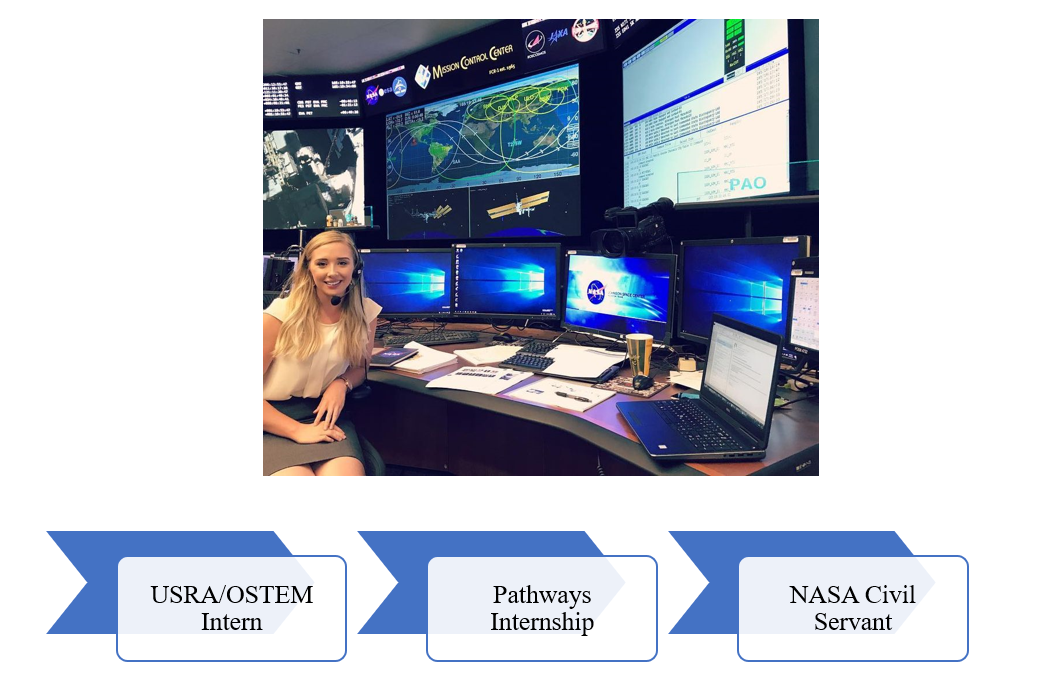
Public Affairs Officer Sandra Jones
Randy Eckman, a trajectory analyst at NASA’s Johnson Space Center in Houston, started his NASA career as a Pathways student in 2009. When asked about the benefits of his internship, he stated, “Practical experience and on-the-job training! I learned far more about the industry and my specialized field from working as a co-op (Pathways intern) than I ever did in school. Gaining that exposure is priceless for anyone wishing to work in the industry of applied spaceflight.”
Eckman is also a mentor and says he hopes to provide students with the same positive experience he had as an intern.
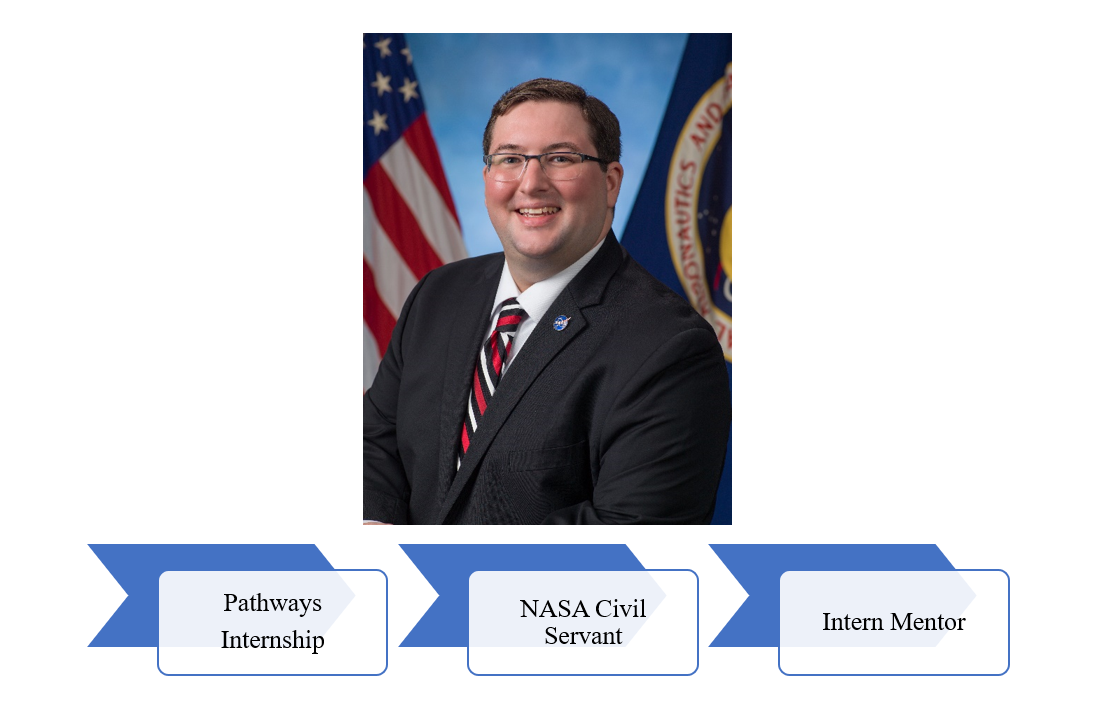
Trajectory Analyst Randy Eckman
Electrical Engineer Livette Santiago-Cardona took a similar route while in college, completing a summer internship at NASA. Her internship eventually opened the door for many opportunities, including 20 years supporting manufacturing industries and serving in a consultant role before returning to Johnson as an environmental engineer. When asked about the impact of her internship, she said, “My internship at NASA made me realize how ordinary people can accomplish extraordinary things when the resilient effort and focused work of many stays on track toward a common goal.”
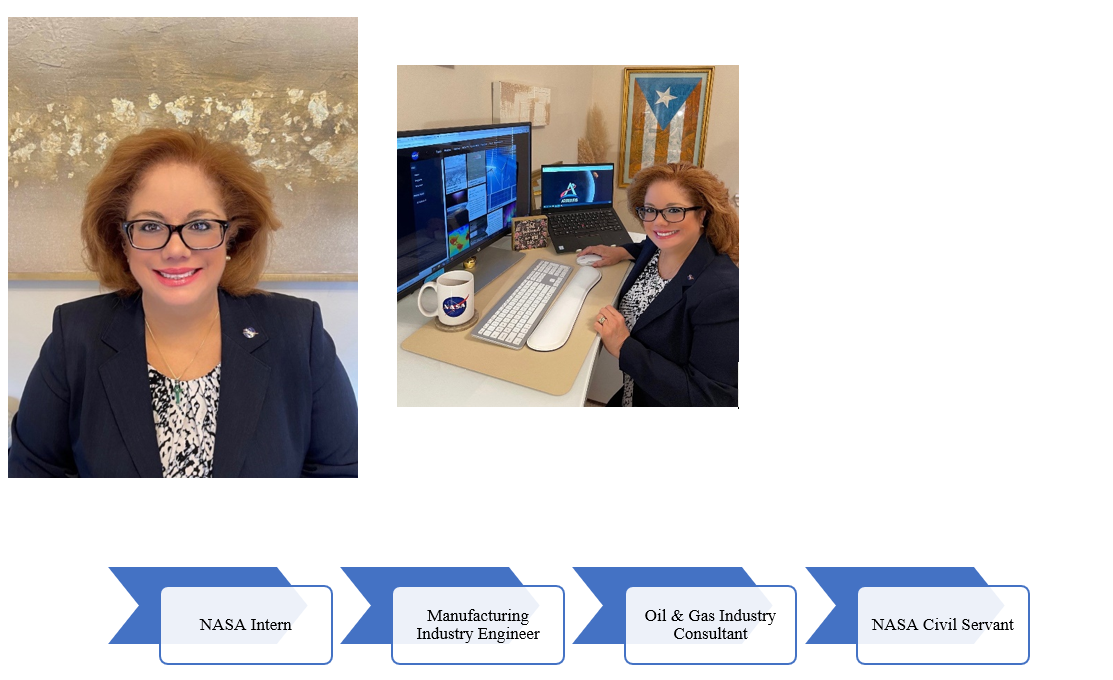
Environmental Engineer Livette Santiago-Cardona
Intern turned mentor Charles Nichols, manager of the Metallurgy and Nondestructive Evaluation, or NDE, Laboratory at Johnson and the White Sands Test Facility, has an interesting story of his own. Nichols served his country as a U.S. Marine, leading troops in combat in Iraq and Kuwait, and then on American soil as a police officer. While working on his degree in mechanical engineering at New Mexico State University, Nichols completed multiple NASA internships and was involved in the NASA New Mexico Space Grant Consortium Scholar Program, participating in research and technology projects, before joining the NASA team. He shared about his experience mentoring students, saying, “Personal growth, enhanced productivity, and the additional insight gained by having to explain what and why we are doing something is priceless.”
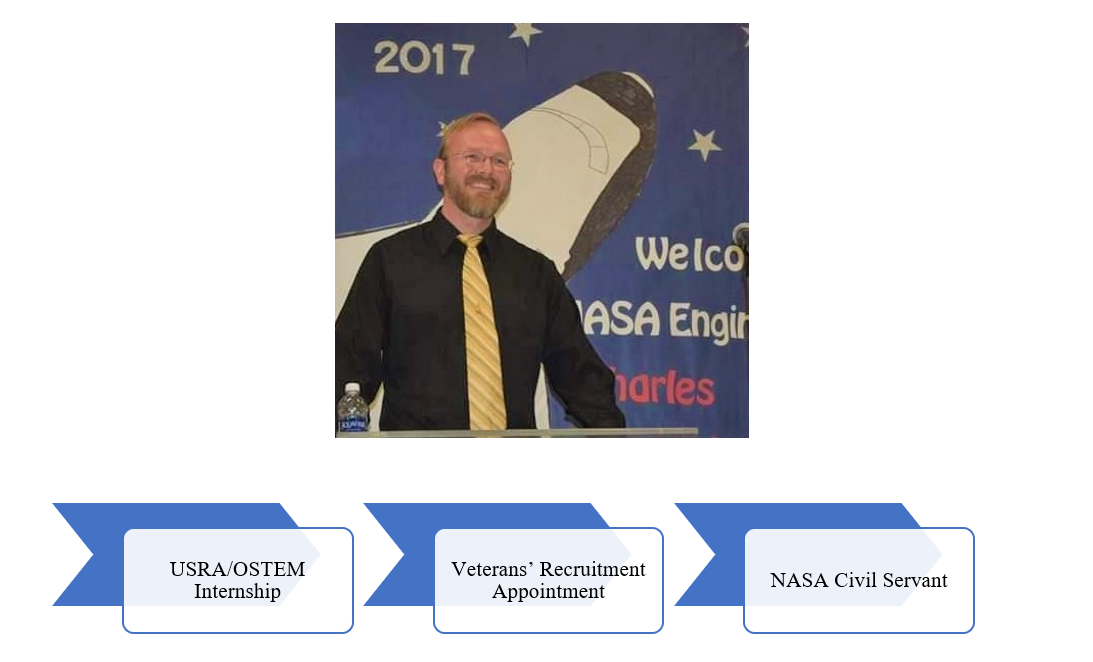
Manager of the Metallurgy and NDE Laboratory Charles Nichols
NASA internships are not the only way for students to get engaged. NASA offers a variety of student activities for all ages and grade levels, such as High School Aerospace Scholars (HAS), Micro-g Neutral Buoyancy Experiment Design Teams, NASA Fellowships, Spacesuit User Interface Technologies for Students, NASA Community College Aerospace Scholars, and many others. These activities provide students the chance to participate in NASA’s mission and make an impact.
Becky Kamas, NASA’s STEM on Station Activity manager who connects International Space Station education resources to students and teachers, has worked at NASA for almost 13 years, but her love of NASA began as a participant in the HAS program. From there, as a teacher, she used the agency’s resources and stayed involved in its exciting work through educator programs. She later made the leap to NASA, accepting a position with Oklahoma State University before transitioning to her current role. Now a mentor, “all of my NASA experience as a student (in HAS) 100% put me on the path to working at NASA,” Kamas said. “NASA felt like home! It wasn't a straight path, but I wouldn’t change a thing!”
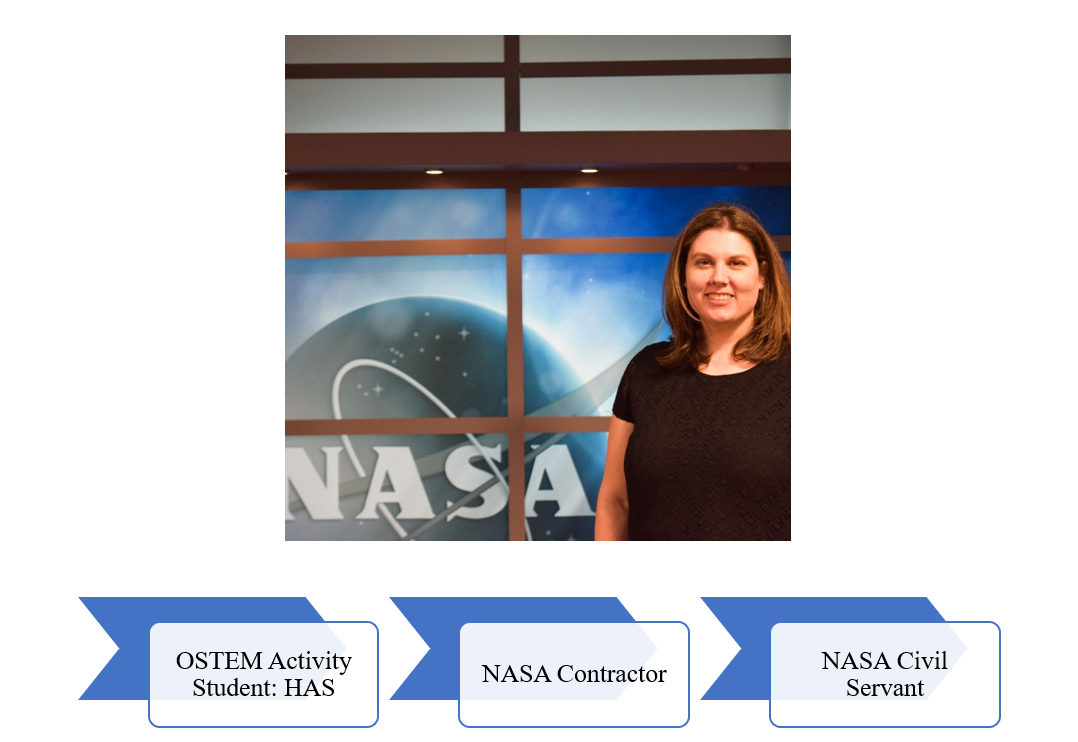
NASA STEM on Station Activity Manager Becky Kamas
Public Affairs Officer Kenna Pell’s story reflects just that. In 2014, Pell interned at the Visitor Complex at Kennedy Space Center in Florida. Although this position was considering only interns with previous internship experience, which Pell lacked, she hand-delivered her resume, got the job, and now likes to say, “There’s never any traffic on the extra mile.”
Upon graduating, Pell admits she had no idea what was in store. But, using her recently gained connections, she discovered that Kennedy was seeking a temporary public relations employee. Pell took her marketing background and turned it toward new experiences and a love for space. That passion led her to a position at Kennedy’s press site and, more recently, a big change with a move to Johnson to support the International Space Station program. She realizes her unconventional path was laid by pushing herself out of her comfort zone and being willing to try new things — advice she gives students today.
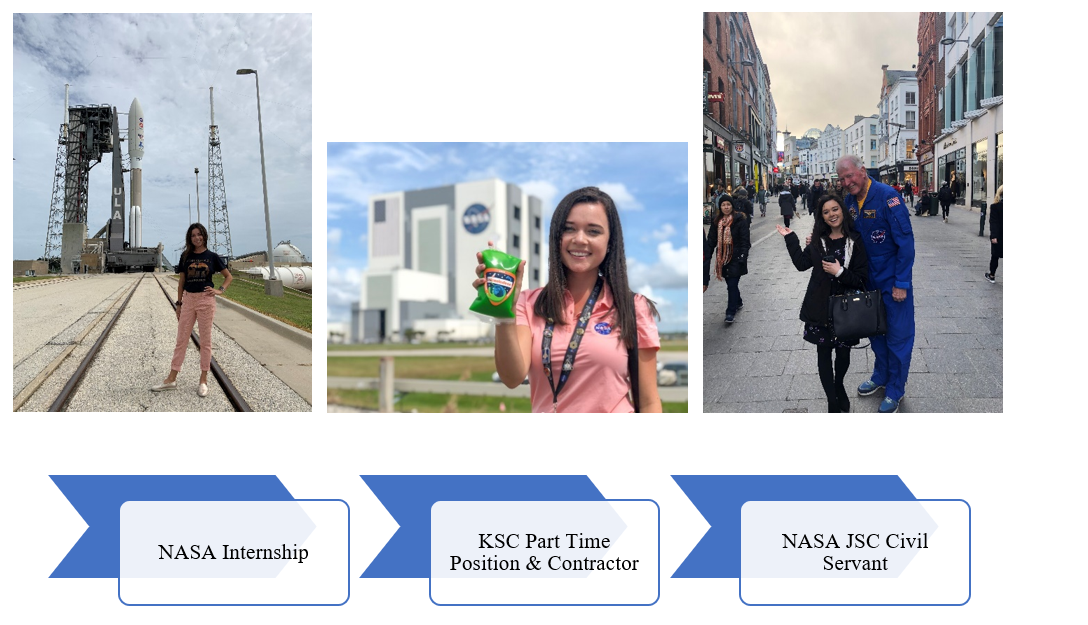
Public Affairs Officer Kenna Pell
NASA is seeking to increase the activities and projects available to students to build and encourage the next generation of space explorers. While there is no right or wrong way to chase a dream, it is evident from these shared stories that passion, drive, and motivation speak louder than words on a resume. Our mentor storytellers agree: dream big, don’t limit yourself, and give back by mentoring.
Mentors, meanwhile, help students learn, grow, and encourage them to reach their potential.
Whether you are a high school student seeking ways to begin your NASA journey, an intern wondering about the next step, or a mentor training the next generation of NASA researchers, writers, engineers, and explorers, your impact on NASA’s mission and the Artemis Generation is as limitless as the expansive universe we seek to explore.








